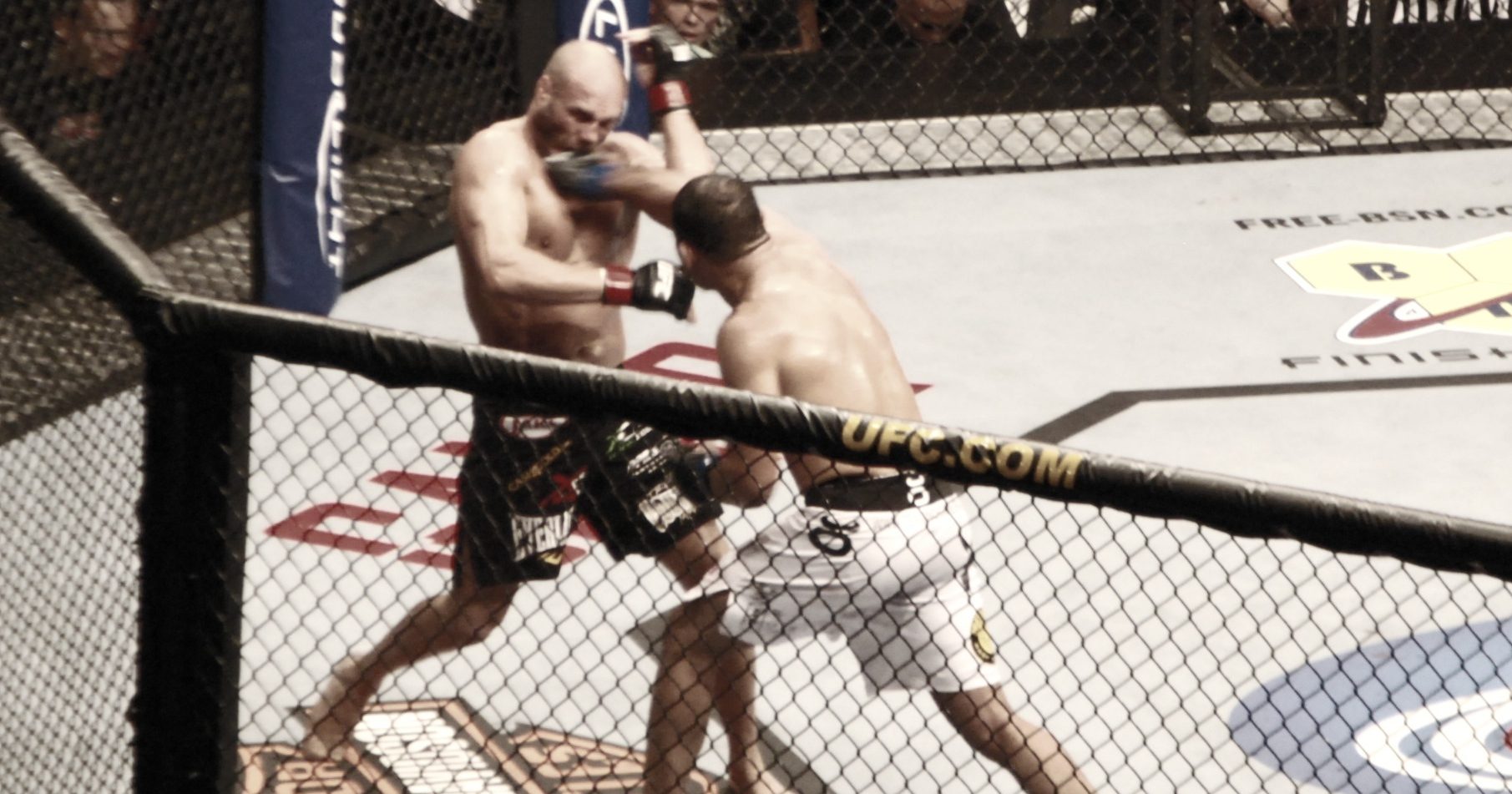Brazil has plenty of talented mixed martial arts fighters. Anderson Silva, Jose Aldo, and Junior dos Santos, just to name a few. However, one of the most prominent figures in the spotlight of mixed martial arts in the early 2000s until his retirement in 2015 was Minotauro or Big Nog – Rodrigo Minotauro Nogueira. This heavyweight is a twin brother of Antonio Rogerio but has made quite a name for himself over 16 years of professional MMA fights. Let’s look back at his career and celebrate Minotauro’s successes.
Early Life & Against All the Odds
Born on June 2, 1976, in Vitoria da Conquista, a town of 300,000 people in Brazil, Rodrigo Nogueira’s journey into martial arts began early. At the ripe age of 4, significantly influenced by his family, Minotauro went to train in judo. His father was an accountant, and his mother owned a gym, which provided the perfect environment for him and his twin brother, Antônio Rogério, to start training in martial arts even before they went to school.
Talent was evident from the start, and Rodrigo wanted more. He advanced to boxing at 14 and started training Brazilian jiu-jitsu at 17-18.
It would be a regular tale of a kid growing up and becoming a champion, but in reality, for the kid from Vitoria da Conquista, it was much more challenging. A tragic incident marked Minotauro’s early life. It was so tragic, in fact, that it nearly ended his dreams before he even had a chance to finish school. When he was 11, the future UFC superstar was run over by a truck. This accident left him in a coma for several days and resulted in severe injuries, including broken ribs, a punctured lung, and significant damage to his liver and kidneys. For some, it might’ve been game over for competitive sports, let alone fighting, but for Minotauro, it was just fuel for his fire. It took a while for him to recover, but he returned to being better than ever. He has a noticeable scar on his back that reminds everyone watching of the gruesome accident.
The talent wasn’t gone, and trainer Ricardo De La Riva took Rodrigo under his wing and helped the young man earn his black belt in 1999. His success in the sport forced the fighter to look for commercial opportunities. One of which appeared in Japan, and he immediately took it. Fighting Network RINGS invited him to fight, and he won the King of Kings (KOK) tournament in Japan at the age of 24. In two years of pro MMA fights, he amassed a record of 11-1-1.
Rodrigo Minotauro Nogueira Tastes Victory
His victories in RINGS and other bouts caught the attention of even more promoters, one of which was the Pride Fighting Championships or Pride FC, where he signed as a heavyweight fighter.
In Pride FC, Nogueira solidified his status as one of the top heavyweights in the world. He made a stunning debut by submitting Gary Goodridge at Pride 15 and followed up with another impressive victory against American Mark Coleman.
His most notable early accomplishment in Pride was winning the inaugural Pride FC heavyweight championship. He did so by defeating Heath Herring via unanimous decision. The fight in Tokyo, which happened on November 3rd, 2001, showcased to a very wide audience how talented a striker and grappler Minotauro was. You could say that this victory marked the beginning of Brazilian’s reign as a dominant force in the heavyweight division.
Highest Peaks and Lowest Lows
Nogueira’s career in Pride FC is also remembered for his battles against some of the toughest competitors in the sport. The list includes Bob Sapp, Dan Henderson, and The Last Emperor -Fedor Emelianenko. Fans of Nogueira probably remember his bout with the NFL player-turned-fighter Sapp. The Beast was a much larger and physically imposing opponent and could be deemed the favourite from the get-go. However, he weathered a brutal assault and managed to win by submission (armbar).
This happened around 2001-2002 when Nogueira went on a 12-fight winning streak. However, whenever Minotauro was peaking, his arch nemesis provided significant setbacks to further career progression. Minotauro’s nemesis was Fedor Emelianenko, a Russian Combat Sambo and Judo master. He suffered two defeats via unanimous decision and one non-completion due to an accidental clash of heads.
Despite a few setbacks, Rodrigo Nogueira’s legacy in Pride is characterised by his remarkable ability to overcome adversity and consistently perform at the highest level.
Following the dissolution of Pride FC, Nogueira transitioned to the best new thing – the Ultimate Fighting Championship (UFC). He first fought in UFC 73 and won against the already-mentioned Heath Herring. His UFC career is a mixed pot of highs and lows.
One of the most memorable moments in the UFC was his victory over Tim Sylvia to win the interim UFC heavyweight championship. He held the title for ~10 months and then lost it to Frank Mir. He had a few more noteworthy wins, like the one against Randy Couture (Fight of the Year, 2009), yet the Brazilian’s career was already past its peak.
He finished his career with a respectable 34-10-1-1 record and is remembered as a very solid MMA fighter of the early to mid-2000s.
Rodrigo Minotauro Nogueira – Life After MMA
Even though he isn’t active as a fighter since 2015, Big Nog is still visible to the public eye, especially in the MMA scene of Brazil. He co-founded Team Nogueira. It’s a successful training facility that has produced many successful fighters in the MMA scene with locations in multiple continents.
He is also associated with Black House, another renowned MMA team. Nogueira’s influence extends beyond the cage, as he has played a vital role in mentoring the next generation of Brazilian fighters.


